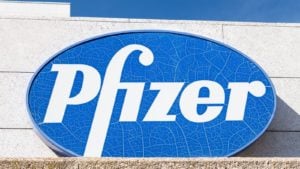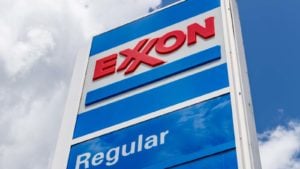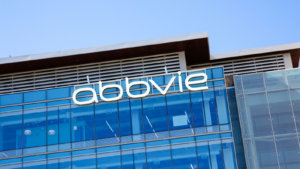The first one highlights the company’s leadership in digital services and advertising. Its cloud and video platforms serve as foundations of revenue development. Meanwhile, the second one offers a solid chance for stability and growth thanks to its diverse investment options and outstanding asset management performance. Further, the third company is at the vanguard of the pharmaceutical business. Strategic acquisitions and a solid pipeline reinforce this. The fourth one’s emphasis on its calculated bets on expansion initiatives.
Moreover, the fifth one’s smart acquisitions and effective capital deployment support its durability. Indeed, the sixth company’s dedication to financial adaptability and efficiency highlights its capacity to overcome market obstacles. Finally, the seventh company’s steady top-line growth and wide range of products help to reduce market volatility concerns.
These prospects have been chosen based on the company’s demonstrated performance histories, creative approaches and focus on providing value despite economic challenges.
Alphabet (GOOG,GOOG)

Google Cloud, owned by Alphabet (NASDAQ:GOOG, NASDAQ:GOOGL), is in high demand. In Q1 2024, the top-line reached $9.6 billion, up 28% year-over-year (YOY). Workspace productivity tools and expansion of Google Cloud Platform (GCP) infrastructure and solutions boost the company’s cloud segment. Google Cloud’s focus on using artificial intelligence (AI) capabilities to improve customer experiences and spur growth highlights Alphabet’s lead in AI and cloud computing.
Additionally, with advertising sales of $8.1 billion in Q1 2024 and solid 21% YOY growth, YouTube remains a major source of revenue. Direct response and brand advertising are the main drivers of YouTube’s growing advertising income. Also, the money made from YouTube subscribers, platforms and devices increased significantly, reaching $8.7 billion, an 18% YOY increase.
Overall, this expansion demonstrates Alphabet’s fundamental ability to derive top-line from sources other than traditional advertising and monetize its video-sharing platform.
T. Rowe Price (TROW)

In Q1 2024, T. Rowe Price’s (NASDAQ:TROW) total assets under management (AUM) were at $1.54 trillion, a considerable 15% YOY boost in Q1 2023. The increase reflects the company’s ability to attract and retain investor capital. This reflects investor trust in the company’s performance and investing plans.
Over one, three and five years, T. Rowe Price’s multi-asset range (including managed payout funds and nearer-dated retirement funds) showed top-quartile performance. Furthermore, newly introduced retirement blend funds fared in the top quartile for one year. Over 50% of funds exceed the median for their peer group.
Moreover, there are three, five, and one-year time frames. Similarly, during one, three and five years, more than 50% of the company’s fixed-income funds outperformed the median of their peer group. Finally, over the same periods, a number of U.S. dollar-hedged foreign bond funds, global multi-sector bonds, credit opportunities and fixed-income Muni Funds performed in the top third of their peer groups.
Pfizer (PFE)

Pfizer (NYSE:PFE) has demonstrated its focus on generating growth by emphasizing five strategic initiatives. Those include establishing cancer leadership, pipeline innovation, maximizing product performance and cost realignment. Aligning the cost base and streamlining commercial structures are two examples of operational efficiency projects that try to improve resource allocation and profitability.
Furthermore, Pfizer’s focus on research and pipeline enrichment is reflected in its record-breaking year for regulatory approvals in 2023. Nine new molecular entities and indications for already-approved medications were approved this year. The acquisition of Seagen expanded Pfizer’s portfolio and boosted its cancer research capabilities. With that, the company aims to release possible blockbuster drugs by 2030.
Finally, Pfizer is ahead in product advancements thanks to its ongoing investment in research and development, demonstrated by regulatory approvals and sharp acquisitions. Hence, a solid pipeline supports a continuous flow of new products, retaining a competitive edge and fueling top-line growth.
Exxon Mobil (XOM)

In Q1 2024, Exxon Mobil (NYSE:XOM) made $5.8 billion in CapEx, demonstrating its continued focus on funding growth efforts. In short, return potential is based on the company’s major project investments. These include the expansion of the Beaumont refinery and expansions in Guyana. For instance, Guyana’s sixth major development seeks to boost gross production capacity by around 250K barrels of oil equivalent per day by 2027.
Moreover, Exxon Mobil’s massive CapEx spending reflects the company’s aggressive pursuit of growth possibilities and enhancement of its operating capabilities. By investing in advantaged growth initiatives, the company may continue to use its competitive edge and set itself up for long-term sustainable growth.
Overall, Guyana-based strategic initiatives illustrate Exxon Mobil’s focus on high-potential assets that can boost profits and cash flow in the future. Hence, Exxon Mobil’s potential for fast expansion depends on strategic investments in advantaged growth initiatives.
Walmart (WMT)

With a focus on optimizing return on investment (ROI) and sharp capital allocation, Walmart (NYSE:WMT) has derived market value and sustained growth. The ROI for 2023 increased by 2.3% to 15%, indicating a considerable improvement. It also speaks to Walmart’s capacity to create greater returns from its invested capital. Indeed, it highlightes its strategic objectives’ efficacy and operational efficiency.
In addition, the company’s CapEx for the year totaled $20.6 billion, or around 3% to 3.5% of revenues. These initiatives have focused on growing digital capabilities, retail remodels, supply chain change, and technology and innovation. Moreover, Walmart concentrates on strategic acquisitions, including the agreement to buy VIZIO. These aim to strengthen its position and propel expansion in important digital commerce and advertising markets.
To sum up, Walmart anticipates the transaction to be accretive to the internal rate of return (IRR) and provide higher returns than the anticipated ROI, notwithstanding the possibility that it could temporarily dilute EPS.
British American Tobacco (BTI)

Efforts are ongoing by British American Tobacco (NYSE:BTI) to minimize expenses, produce savings and improve balance sheet flexibility. This shows the company’s focus on financial flexibility and efficiency. With a continual improvement approach, the organization has a history of creating efficiency. And by 2025, the management hopes to save an extra £1 billion. British American Tobacco had savings of nearly £500 million in 2023 alone, proving its proactive focus on cost control.
Additionally, British American Tobacco’s is dedicated to reallocating resources to areas with greater returns. That is demonstrated by its focus on expansion of its geographic presence through calculated withdrawals from non-strategic sectors. Thus, BTI can optimize valuation by redirecting resources toward areas with higher growth prospects and exiting markets with low opportunities for new category growth.
Lastly, with four years in a row of at least 100% operational cash conversion, British American Tobacco’s sharp free cash flow creation highlights its capacity to reward shareholders and maintain financial discipline. Hence, the company’s long-term financial goals align with its progressive dividend growth and dedication to giving back surplus capital to shareholders, further increasing returns.
AbbVie (ABBV)

AbbVie’s (NYSE:ABBV) revenue increase from $18 billion to $55 billion shows a steady, rising trend. This growth results from the company’s successful product introductions, expansion initiatives and commercial strategy.
Moreover, ABBV’s revenue increase is mainly attributable to its diverse product line, including Qulipta, Rinvoq, Venclexta, Vraylar, Ubrelvy and Skyrizi. Because of this diversity, AbbVie can reduce the risks associated with dependence on a particular product or market sector. Additionally, it allows the business to serve a broader range of therapeutic areas, meeting various patient requirements and market expectations.
Finally, despite obstacles like Humira’s loss of exclusivity in the U.S., AbbVie has sustained top-line growth. The ability to overcome such obstacles is a testament to ABBV’s operational expertise and strategic insight. The company has maintained top-line growth and reduced the negative effects of patent expirations on its financial performance by taking a proactive approach to market developments and implementing effective mitigation plans.
As of this writing, Yiannis Zourmpanos held long positions in GOOG, PFE, BTI and ABBV. The opinions expressed in this article are those of the writer, subject to the InvestorPlace.com Publishing Guidelines.
Yiannis Zourmpanos is the founder of Yiazou Capital Research, a stock-market research platform designed to elevate the due diligence process through in-depth business analysis.
